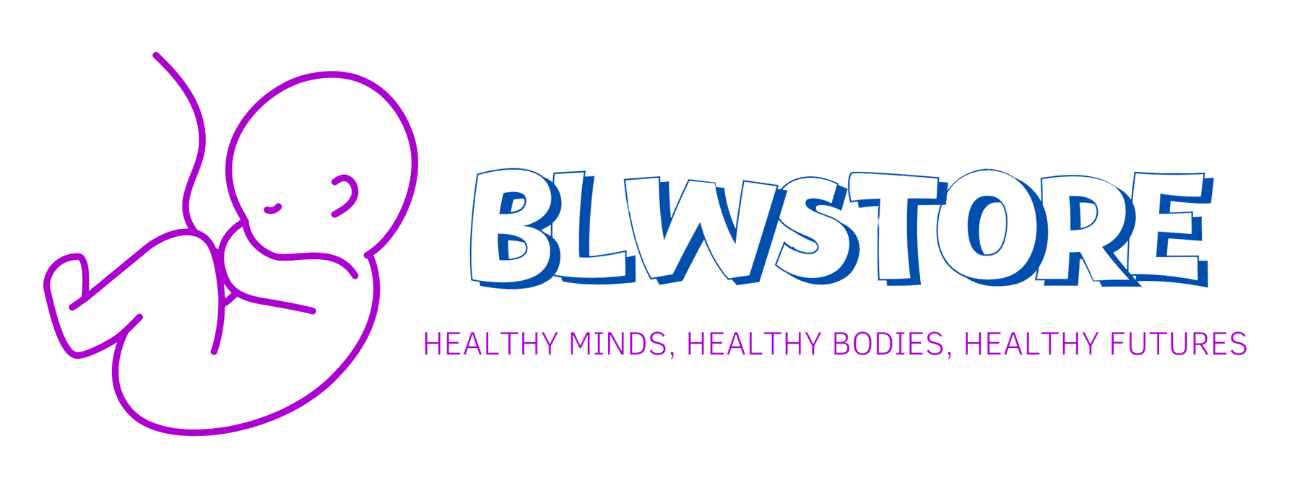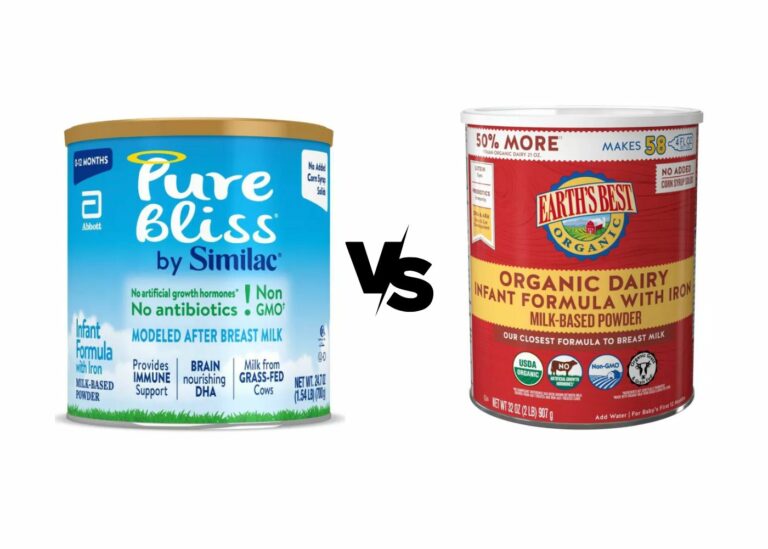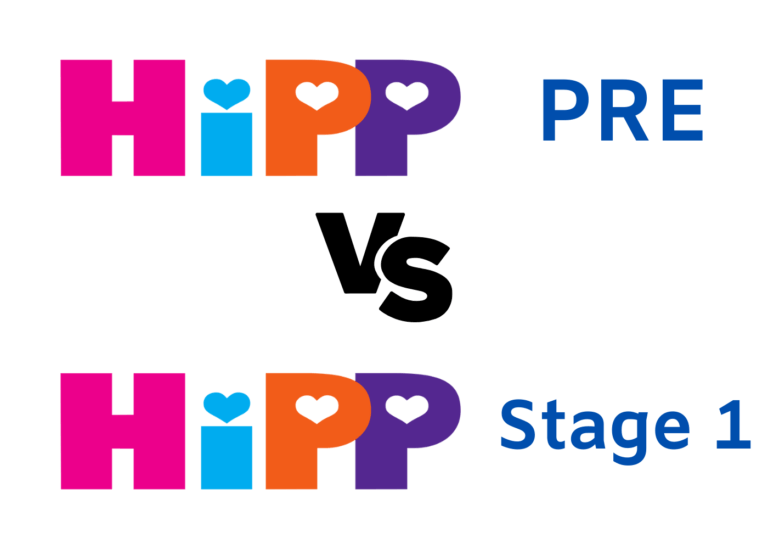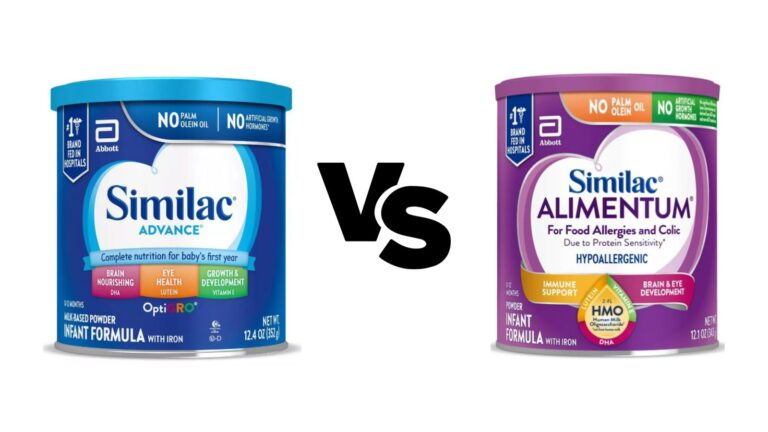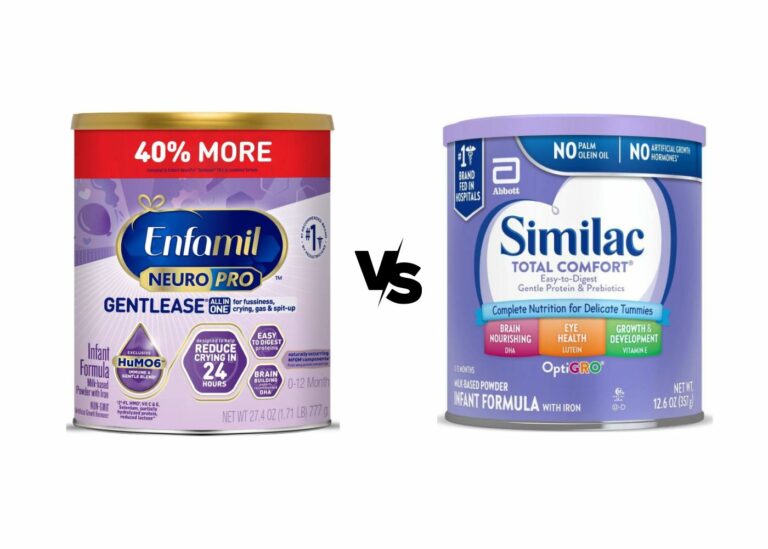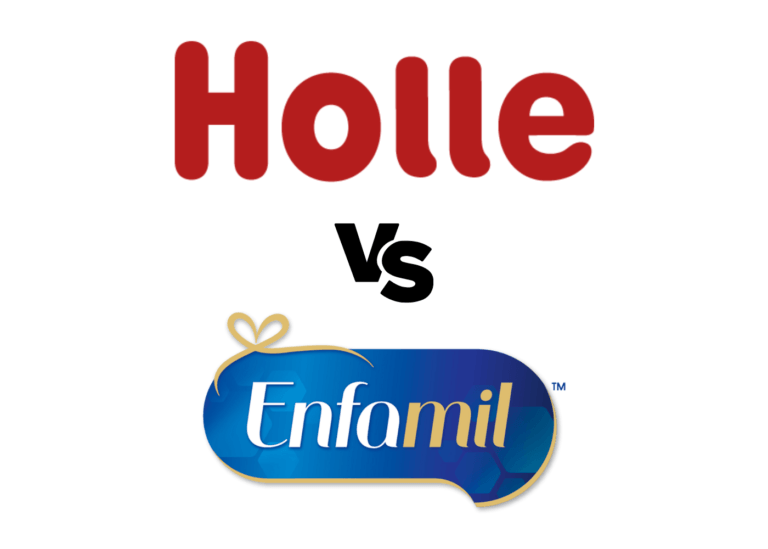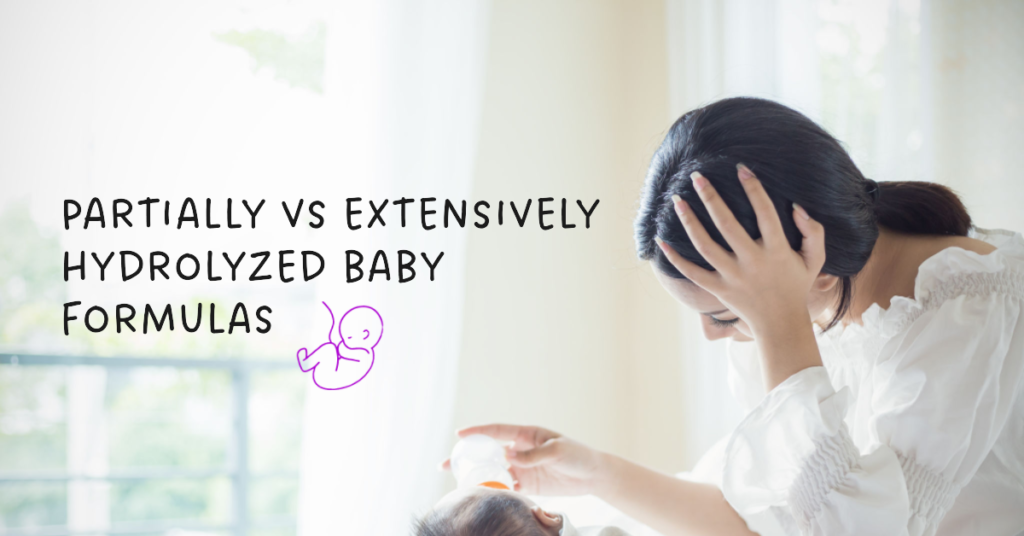
Key Differences Between Partially and Extensively Hydrolyzed Formulas
Factor Partially Hydrolyzed Baby Formula Extensively Hydrolyzed Baby Formula What is it? Made from cow’s milk protein partially broken down Made from cow’s milk protein extensively broken down Digestibility Easy for babies to digest Even easier for babies to digest, reducing chances of allergic reaction Best For Babies with high risk of allergies, digestive problems Babies with cow’s milk protein allergy (CMPA) Allergy Prevention May reduce risk of developing allergies Further reduces risk of developing allergies Health Benefits Improved digestive health, reduced colic symptoms, lower regurgitation, alleviation of constipation, support for immune system development Treats milk protein allergy, prevents atopic conditions, improves digestive comfort, boosts immune system, safe for long-term use Popular Brands Enfamil Gentlease, Enfamil Reguline, Similac Total Comfort, Gerber GentlePro, HiPP Comfort – UK, HiPP Comfort – German Nutramigen, Similac Alimentum, EleCare, Alfamino Possible Drawbacks May not be sufficient for babies with severe protein allergies Might change in flavor and texture, pricier than regular formulas
Is your baby having problems digesting conventional formula?
Are you wondering whether to choose a partially or extensively hydrolyzed baby formula?
You are in the right place.
This article aims to help parents choose the best type of hypoallergenic formula for their babies.
Let’s get after it!
*Read: Best Hypoallergenic Formulas
Should You Choose Partially Hydrolyzed or Extensively Hydrolyzed?
Based on the fact that it is always advisable to consult a pediatrician, here are the facts:
1. Choose a partially hydrolyzed formula (PHF) if your baby has a high risk of developing allergies (for example, if a sibling or parent has a food allergy or other types of allergies like asthma or eczema). A PHF may also be helpful if your baby has trouble digesting full-size proteins or has a history of digestive problems.
2. Choose an extensively hydrolyzed formula (EHF) if your baby has a cow’s milk protein allergy (CMPA).
Partially Hydrolyzed Baby Formula
Partially hydrolyzed baby formula is made from cow’s milk protein that has been partially broken down, making it easier for babies to digest.
*Related: Hydrolyzed Baby Formulas
How Is A Partially Hydrolyzed Formula Made?
Creating a partially hydrolyzed baby formula involves using enzymes to break down cow’s milk proteins, namely whey and casein, into smaller pieces.
*Related: Whey and Casein Ratio in Baby Formula
This process, known as hydrolysis, makes it easier for your little one to digest the formula, which is especially important for infants who are at risk of developing allergies.
Benefits Of Partially Hydrolyzed Formula
Improved digestive health: Partially hydrolyzed formulas break down proteins into smaller, more manageable pieces, which can be easier for your baby’s sensitive tummy to digest.
Allergy prevention: Research suggests that feeding infants a hydrolyzed formula from birth may reduce the risk of developing allergies later in life.
Management of cow’s milk allergy: For infants with cow’s milk protein allergies or sensitivities, partially hydrolyzed formulas offer an alternative source of nutrition without triggering adverse reactions.
Reduced colic symptoms: Numerous studies have shown that partially hydrolyzed formulas can have benefits in managing infantile colic and related symptoms like excessive crying and fussiness.
Lower risk of regurgitation: Babies fed with partially hydrolyzed formulas may experience less regurgitation due to the smaller protein particles’ easier-to-digest nature.
Alleviation of constipation: The improved digestibility of partially hydrolyzed formulas helps promote regular bowel movements and prevent constipation in infants.
Support for immune system development: Hydrolysis in baby formula has promising effects on promoting healthy immune system development by providing well-tolerated proteins.
Popular Partially Hydrolyzed Formula Brands
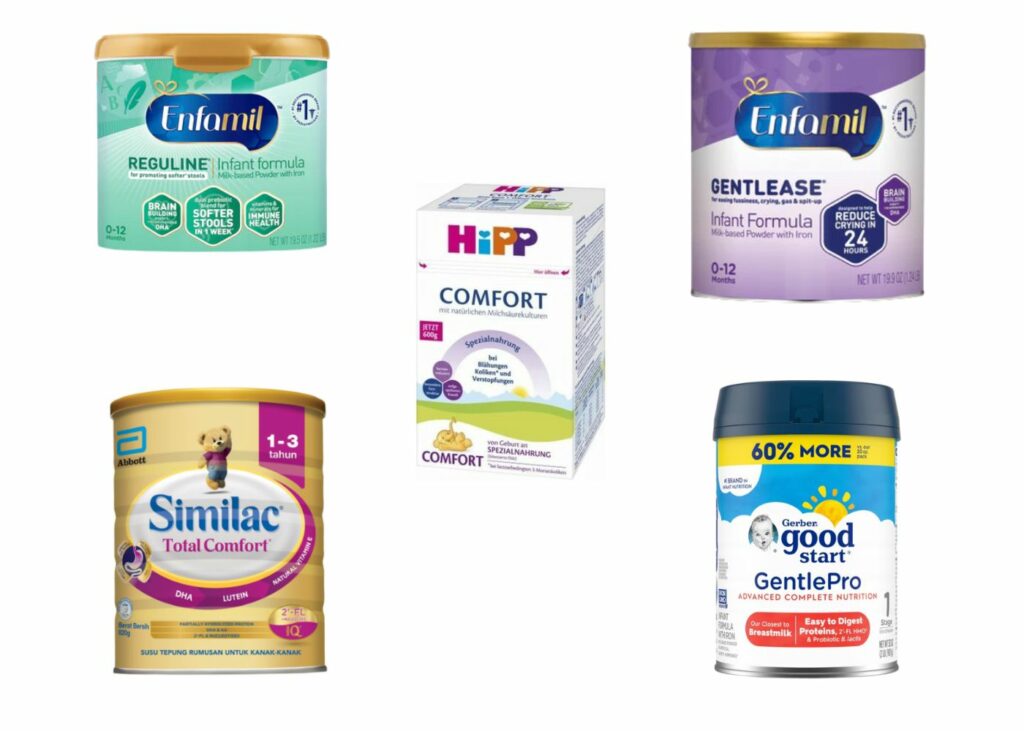
Enfamil Gentlease
- Protein: Partially Hydrolyzed Nonfat Milk + Whey (60:40 whey:casein ratio)
- Carb: 80% Corn Syrup Solids, 20% lactose
- Pre & Probiotics: No
Enfamil Reguline
- Protein: Partially Hydrolyzed Nonfat Milk + Whey (60:40 whey:casein ratio)
- Carb: 50% Corn Syrup Solids, 50% lactose
- Pre & Probiotics: Polydextrose, Galacto-oligosaccharides (prebiotics)
Similac Total Comfort
- Protein: Partially Hydrolyzed Whey Protein
- Carb: 80% Corn Syrup Solids, 20% Sugar
- Pre & Probiotics: Galacto-oligosaccharides (a prebiotic)
Gerber GentlePro
- Protein: Partially Hydrolyzed Whey Protein
- Carb: 70% lactose, 30% maltodextrin
- Pre & Probiotics: Galacto-oligosaccharides (a prebiotic), Bifidobacterium Lactis (a probiotic)
HiPP Comfort – UK
- Protein: Partially Hydrolyzed Whey Protein
- Carb: maltodextrin, lactose, starch
- Pre & Probiotics: Galacto-oligosaccharides (a prebiotic)
HiPP Comfort – German
- Protein: Partially Hydrolyzed Whey Protein
- Carb: maltodextrin, lactose, starch
- Pre & Probiotics: Galacto-oligosaccharides (a prebiotic), Lactobacillus fermentum hereditum (a probiotic)
Extensively Hydrolyzed Baby Formula
Extensively hydrolyzed formulas are made from cow’s milk protein that has been broken down into smaller pieces, which may help reduce the risk of allergic reactions and digestive discomfort in infants with cow’s milk allergy or intolerance.
How Is An Extensively Hydrolyzed Baby Formula Made?
Like the partially hydrolyzed formula, it’s done by hydrolysis but breaking down the protein extensively.
The process begins by adding enzymes to the milk, which target and break apart the large protein molecules into much smaller fragments, known as peptides and amino acids.
Benefits Of Extensively Hydrolyzed Formula
Treats milk protein allergy: Extensively hydrolyzed formula effectively treats infant milk protein allergy or CMPA. *Read: Baby Formula Allergies
Prevents atopic conditions: It has been found that feeding extensively hydrolyzed formula to high-risk infants can help prevent atopic conditions like asthma and eczema.
Digestive comfort: Babies with digestive issues like colic, constipation, or diarrhea may benefit from using extensively hydrolyzed formulas. The proteins in these formulas are easier to digest, leading to less discomfort.
Improved immunity: Research has shown that feeding infants with extensively hydrolyzed formulas may boost their immune system by reducing inflammation and promoting healthy gut bacteria.
Safe for long-term use: Extensively hydrolyzed formulas are safe for long-term use, provided they meet all nutritional requirements for your baby.
Allergy prevention: Hydrolyzed formulas may reduce the risk of developing allergies in babies if used from birth.
Less allergenicity: Extensively hydrolyzed formulas are less allergenic than regular formulas due to the nature of their proteins being partially broken down.
Popular Extensively Hydrolyzed Formula Brands
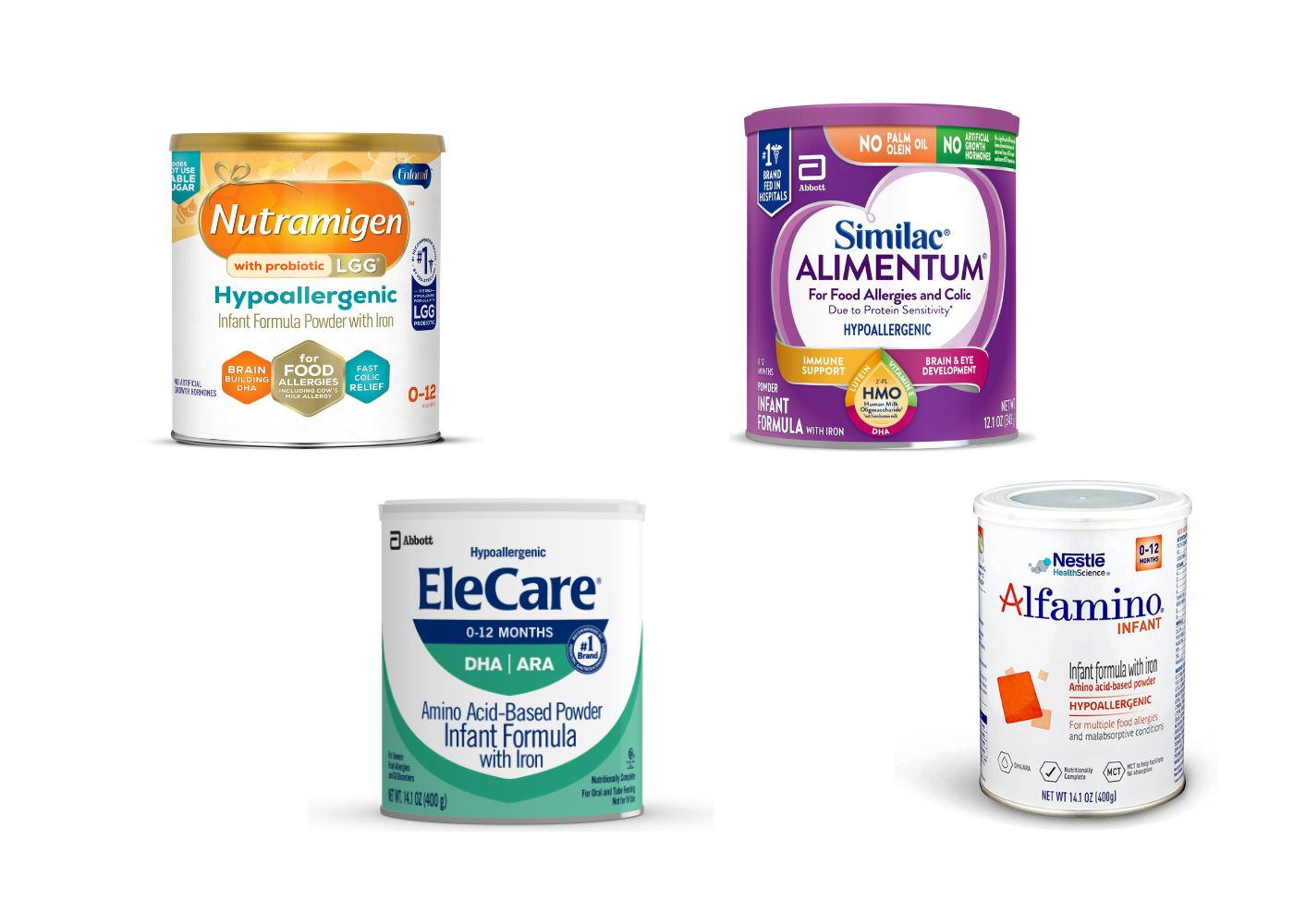
Nutramigen
- This formula is known for its hypoallergenic properties and can help reduce colic, gas, and other common feeding issues in babies.
Similac Alimentum
- Made with extensively hydrolyzed protein, this formula is designed for infants with cow’s milk protein sensitivity. It’s also lactose-free.
EleCare
- This amino acid-based formula is an option for infants with severe food allergies or other digestive issues. It’s also free from common allergens like soy and gluten.
Alfamino
- This hypoallergenic formula is made with free amino acids instead of intact protein. It’s designed to be easily digested by infants with cow’s milk protein allergy or other digestive problems.
How Do I Know If My Baby Needs Hydrolyzed Formula?
If your baby has a milk protein allergy, your GP will prescribe a hypoallergenic formula that is extensively hydrolyzed.
If your baby is experiencing digestive discomfort, such as colic or spitting up after feedings, then trying a partially hydrolyzed formula is a good idea.
Additionally, if you have tried multiple regular formulas without success and your baby continues to experience symptoms of digestive discomfort or nutrient absorption issues, it may be worth discussing a hydrolyzed formula with your pediatrician.
FAQ About Partially And Extensively Hydrolyzed Formulas
What are partially and extensively hydrolyzed baby formulas?
Partially hydrolyzed formulas contain proteins that are broken down into smaller sizes, making it easier for a baby’s digestive system. On the other hand, extensively hydrolyzed formulas break down the proteins even more, reducing the chances of an allergic reaction.
When would a parent need to switch to an extensively hydrolyzed formula?
If a baby is diagnosed with milk or soy protein allergy, or they cannot tolerate partially hydrolyzed formula, a healthcare provider might suggest switching to an extensively hydrolyzed version.
Can parents switch between partially and extensively hydrolyzed formulas?
Yes, a switch can be made, but it’s always best to consult a pediatrician before doing so. Each baby has unique needs and may react differently to various formulas.
Are hydrolyzed formulas safe for long-term use?
Yes, hydrolyzed formulas are safe and effective for long-term use, especially for babies with milk protein allergies. However, parents should always consult with their healthcare provider.
Can hydrolyzed formula be used if a baby has no protein allergy?
Yes, hydrolyzed formula, especially the partially hydrolyzed ones, can be used for babies without protein allergies. These formulas are less allergenic and easier for a baby’s digestive system.
How long should a hydrolyzed formula be used before seeing improvements in baby’s symptoms?
Relief is usually seen within 48-72 hours of starting an extensively hydrolyzed formula. However, each baby is unique, and some may take longer to respond or require additional treatment.
Are there potential drawbacks to using extensively hydrolyzed baby formulas?
Extensively hydrolyzed formulas may change in flavor and texture, which some babies might not prefer. They also tend to be pricier than regular formulas.
We’re Maria and Alberto, a married couple and educators who are nutrition enthusiasts. Even before we had kids, we were already crazy about nutrition.
We’d read scientific articles, watch videos from nutritionists, and spend hours listening to nutrition podcasts.
Today, we continue doing this, but in a different way, as we’ve learned to sift through the noise and trends. Nutrition, like any other field of knowledge, the more you read and learn, the more you develop a comprehensive understanding of reality, and that’s what has happened to us.
Before having our first child, we focused on learning everything we could about child nutrition, using the same techniques we had already employed, backed by our extensive knowledge in nutrition.
Our mission is to help other parents with their children’s nutrition, to help them become the best versions of themselves.
If we are what we eat and drink, which is absolutely true, let’s do it right!
